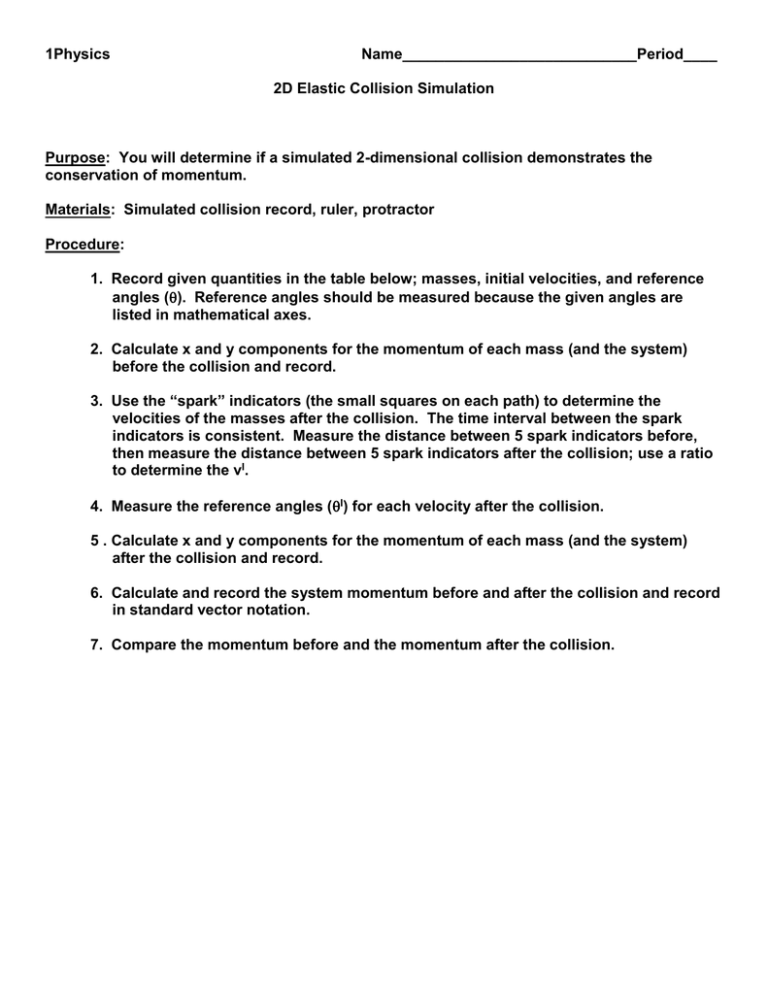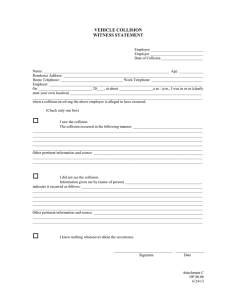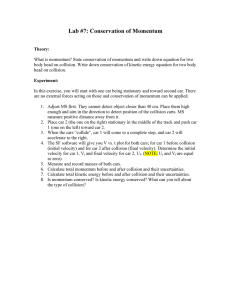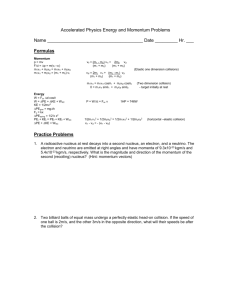1Physics Name____________________________Period____ 2D Elastic Collision Simulation
advertisement

1Physics Name____________________________Period____ 2D Elastic Collision Simulation Purpose: You will determine if a simulated 2-dimensional collision demonstrates the conservation of momentum. Materials: Simulated collision record, ruler, protractor Procedure: 1. Record given quantities in the table below; masses, initial velocities, and reference angles (). Reference angles should be measured because the given angles are listed in mathematical axes. 2. Calculate x and y components for the momentum of each mass (and the system) before the collision and record. 3. Use the “spark” indicators (the small squares on each path) to determine the velocities of the masses after the collision. The time interval between the spark indicators is consistent. Measure the distance between 5 spark indicators before, then measure the distance between 5 spark indicators after the collision; use a ratio to determine the vI. 4. Measure the reference angles (I) for each velocity after the collision. 5 . Calculate x and y components for the momentum of each mass (and the system) after the collision and record. 6. Calculate and record the system momentum before and after the collision and record in standard vector notation. 7. Compare the momentum before and the momentum after the collision. 1Physics Name____________________________Period____ 2D Elastic Collision Simulation Data/Calculations: VERSION__________ m1 m2 v1 I v1 v2 I v2 1I 1 2I 2 X Y X Y P1 P2 P (system) P1 I P2 I PI (system) P = ________________________________________ PI = ________________________________________ Does the collision demonstrate conservation of momentum? Justify your answer.







